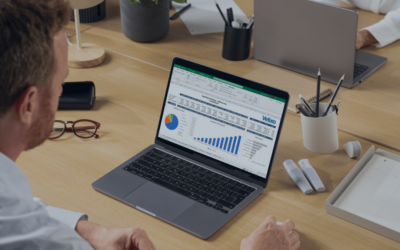Are you ready to select and implement new Enterprise Resource Planning (ERP) software? An ERP implementation can take anywhere from several months to a few years. Having an idea of an ERP project timeline can help you frame the project in your mind as you move forward with it. The following is a basic timeline of events that you can expect to see during an ERP implementation.
6 Phases of the ERP Project Timeline
Phase 1—Discovery and Planning
The first phase in your ERP project timeline will involve the planning and discovery process. During the ERP discovery phase, ERP implementation teams should include key stakeholders, plus staff members from across departments at this stage. A successful ERP implementation involves changes to workflows, and you will need feedback from these employees during the ERP selection process.
Ask them: What do they need from ERP? Where can ERP fill in the blanks in their daily workflow and make their work more effective? Gather a group of employees who can provide this essential feedback so you can select the right solution.
Next, create a shortlist of ERP vendors and request demos from them. Demos can take anywhere from an hour or two to a full day, but they are worth it. They are the best way to understand how a particular ERP solution will function for your business.
Phase 2—Design
Once you have selected an ERP vendor and know what you want to get out of your ERP, you will enter the design phase. The design phase is a critical step in the ERP implementation process. During this phase, you will work with your ERP partner to identify and define the specific business processes that the ERP system will automate or support. The goal is to ensure that the ERP solution is tailored to your business needs, and that it will work seamlessly with your existing business processes.
To begin the design phase, your ERP partner will typically conduct a series of interviews and workshops with key team members in your organization. These sessions will focus on understanding your business processes, identifying pain points, and determining areas where automation and integration can provide the most value. Based on this information, your ERP partner will develop a detailed project plan that outlines the system’s configuration, data requirements, workflows, and more.
This plan will serve as a blueprint for the ERP implementation project. It will guide the project team and implementation consultant as they configure the ERP system, integrate it with your existing systems, and migrate data from your existing systems into the new ERP solution.
Phase 3—Development
The development stage will be primarily in the hands of your ERP implementation partner. In this phase of the ERP implementation timeline, they will configure the software to meet your specific business needs, creating custom workflows and reports, and integrating the ERP system with other applications and databases in your organization.
Your ERP partner will also prepare all necessary user training materials you will need to get your team up and running post-implementation. This may include user manuals, online training modules, and hands-on training sessions to ensure that your team is comfortable using the new ERP system.
Another important aspect of the development phase is data conversion and migration. This involves transferring data from your existing legacy systems to the new ERP system. Data migration can be a complex and time-consuming process, and it is important to ensure that the data is properly cleaned and organized to reduce redundancies in your new system.
Phase 4—Testing
The testing phase of an ERP implementation project is crucial to ensure that the system is working as expected before it is launched. Testing happens throughout the ERP implementation process, but the key QC (quality control) testing takes place in phase 4 of the timeline.
Proactive testing ensures that problems are spotted early and nipped in the bud, limiting cost and complexity after you go live. Testing involves conducting a series of tests to ensure that the system is functioning properly and that it meets your business requirements.
During the testing phase, your ERP partner will work with your team to identify and resolve any issues or bugs in the system. This may involve reconfiguring the system, fixing code, or adding additional capabilities.
Phase 5—Deployment
Your configuration is complete, your data is clean and fully migrated, and you are ready to go live date is near! Just before and/or during phase 5 of your ERP project timeline, you will want to ensure that your employees start their training in the new system. The adoption of this new technology will be much easier when your employees have the skills and information they need about your new ERP solution.
Phase 6—Support
The last phase should continue in perpetuity for the life of your ERP solution. Your ERP vendor will troubleshoot issues, run updates, and let you know about new modules they feel might benefit your organization as you grow. Continue to ask for employee feedback, as their perspective is vital to keeping an ERP solution functioning in the best possible way.
Dig Deeper into the ERP project Timeline and Planning
Implementing an ERP system requires time, careful planning, and smart project management. But in the end, it delivers improved performance, efficiency, and productivity. Learn everything you need to know with our ERP buying guide. Or tell us about your own ERP timeline in the comments below.



